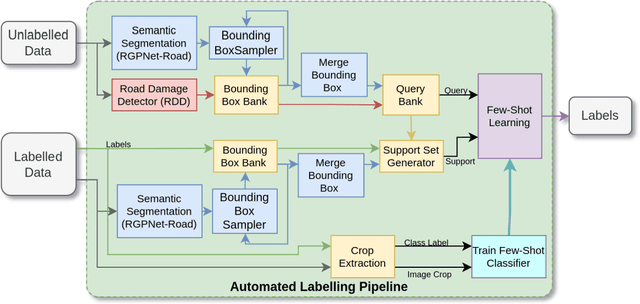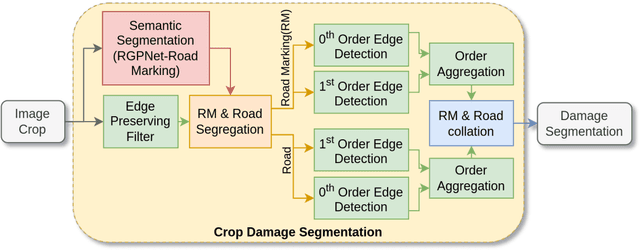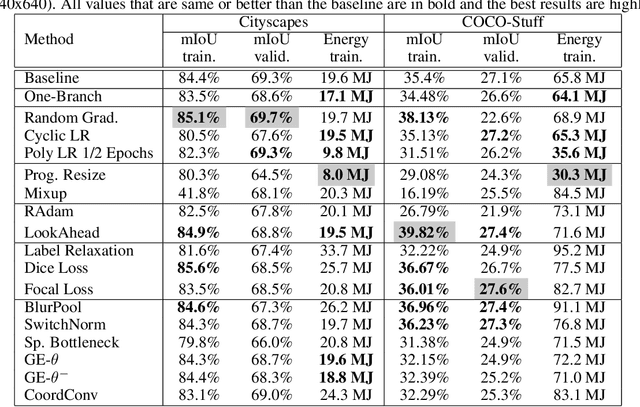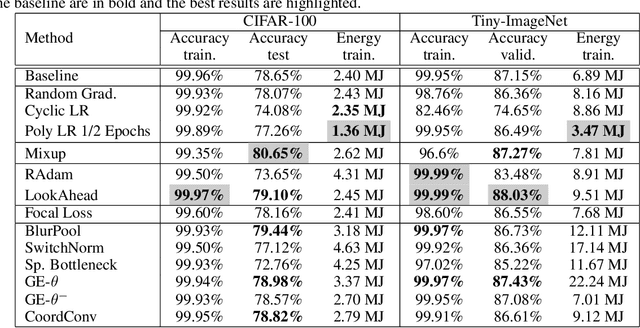Haris Iqbal
AI-Driven Road Maintenance Inspection v2: Reducing Data Dependency & Quantifying Road Damage
Oct 07, 2022



Abstract:Road infrastructure maintenance inspection is typically a labor-intensive and critical task to ensure the safety of all road users. Existing state-of-the-art techniques in Artificial Intelligence (AI) for object detection and segmentation help automate a huge chunk of this task given adequate annotated data. However, annotating videos from scratch is cost-prohibitive. For instance, it can take an annotator several days to annotate a 5-minute video recorded at 30 FPS. Hence, we propose an automated labelling pipeline by leveraging techniques like few-shot learning and out-of-distribution detection to generate labels for road damage detection. In addition, our pipeline includes a risk factor assessment for each damage by instance quantification to prioritize locations for repairs which can lead to optimal deployment of road maintenance machinery. We show that the AI models trained with these techniques can not only generalize better to unseen real-world data with reduced requirement for human annotation but also provide an estimate of maintenance urgency, thereby leading to safer roads.
Highlighting the Importance of Reducing Research Bias and Carbon Emissions in CNNs
Jun 06, 2021



Abstract:Convolutional neural networks (CNNs) have become commonplace in addressing major challenges in computer vision. Researchers are not only coming up with new CNN architectures but are also researching different techniques to improve the performance of existing architectures. However, there is a tendency to over-emphasize performance improvement while neglecting certain important variables such as simplicity, versatility, the fairness of comparisons, and energy efficiency. Overlooking these variables in architectural design and evaluation has led to research bias and a significantly negative environmental impact. Furthermore, this can undermine the positive impact of research in using deep learning models to tackle climate change. Here, we perform an extensive and fair empirical study of a number of proposed techniques to gauge the utility of each technique for segmentation and classification. Our findings restate the importance of favoring simplicity over complexity in model design (Occam's Razor). Furthermore, our results indicate that simple standardized practices can lead to a significant reduction in environmental impact with little drop in performance. We highlight that there is a need to rethink the design and evaluation of CNNs to alleviate the issue of research bias and carbon emissions.
AI Driven Road Maintenance Inspection
Jun 04, 2021



Abstract:Road infrastructure maintenance inspection is typically a labour-intensive and critical task to ensure the safety of all the road users. In this work, we propose a detailed methodology to use state-of-the-art techniques in artificial intelligence and computer vision to automate a sizeable portion of the maintenance inspection subtasks and reduce the labour costs. The proposed methodology uses state-of-the-art computer vision techniques such as object detection and semantic segmentation to automate inspections on primary road structures such as the road surface, markings, barriers (guardrails) and traffic signs. The models are mostly trained on commercially viable datasets and augmented with proprietary data. We demonstrate that our AI models can not only automate and scale maintenance inspections on primary road structures but also result in higher recall compared to traditional manual inspections.
 Add to Chrome
Add to Chrome Add to Firefox
Add to Firefox Add to Edge
Add to Edge